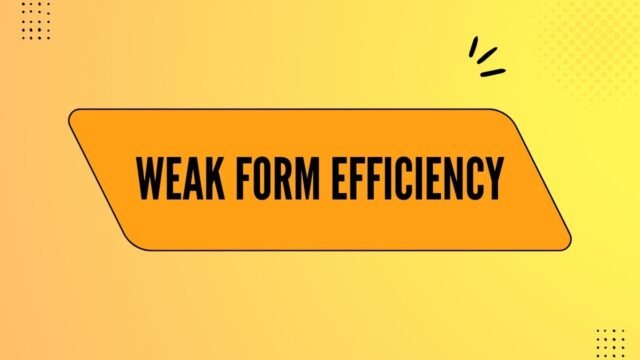
What is Weak Form Efficiency
In finance, weak form efficiency is the idea that prices reflect all information that is publicly available. In other words, it is not possible to beat the market by analyzing past price data because all of the relevant information is already reflected in current prices. The weak form efficiency hypothesis was first proposed by Eugene Fama in the 1960s, and it has since become a cornerstone of modern financial theory.
While the weak form efficiency hypothesis is widely accepted, there are some notable exceptions. For instance, some investors believe that technical analysis can be used to identify patterns in past price data that can be exploited for profit. However, the vast majority of academic research has failed to find any evidence that technical analysis can be successfully used to beat the market. As a result, weak form efficiency continues to be the prevailing view among most financial theorists.
How to Test for Weak Form Efficiency
There are a few ways to test for this. One way is to look at whether or not stock prices react immediately to new information. If they don’t, then that’s an indication that the market is not weak form efficient. Another way to test for weak form efficiency is to look at whether or not there are any predictable patterns in stock prices. If there are, then that’s an indication that the market is not weak form efficient.
Finally, you can also look at whether or not there is a relationship between stock prices and company fundamentals. If there is no relationship, then that’s another indication that the market is not weak form efficient. In short, testing for weak form efficiency requires looking at how well prices reflect all available information. If they don’t, then the market is not weak form efficient.
How Weak Form Efficiency Can Improve Your Trading Results
If you’re a trader, chances are you’re always looking for ways to improve your results. One way to do this is by paying attention to weak form efficiency. Weak form efficiency is the theory that stock prices reflect all information that is publicly available. In other words, there is no point in trying to predict stock prices based on news or events because the market has already factored this information in.
Instead, traders who believe in weak form efficiency focus on technical analysis, which is the study of price patterns. By watching for certain patterns and trends, they believe they can get an edge on the market. While there is no guarantee that weak form efficiency will lead to better trading results, it is certainly worth considering if you’re looking for ways to improve your performance.
Pros and Cons of Using Weak Form Efficiency
There are a number of pros and cons to using weak form efficiency. One of the main pros is that it can help investors to identify companies that may be undervalued by the market. By looking at past prices and trade volume, weak form efficiency can give investors an idea of whether a company is undervalued or overvalued. This information can then be used to make investment decisions.
Another pro of weak form efficiency is that it can help to reduce risk. By looking at past prices and trade volume, investors can get an idea of which companies are more likely to experience price changes in the future. This information can then be used to diversify portfolios and reduce overall risk.
However, there are also a number of cons to using weak form efficiency. One of the main cons is that it relies on historical data, which may not be accurate or representative of future conditions. Additionally, weak form efficiency does not take into account news or other events that could impact stock prices, which means that it may not always be accurate. As a result, investors should carefully consider the pros and cons of using weak form efficiency before making any investment decisions.
Tips for Improving Your Ability to Detect Weak Form Efficiency in the
There are a number of ways that investors can improve their ability to detect weak form efficiency in the marketplace. First, it is important to have a clear understanding of what weak form efficiency is and what it implies about the behavior of prices. Second, investors should develop a disciplined approach to research and analysis, utilizing tools such as statistical testing and trend analysis. Finally, it is also helpful to develop a network of contacts who can provide insights into the workings of the marketplace. By following these tips, investors can improve their chances of detecting weak form efficiency and making profitable investments.


































